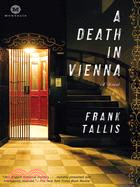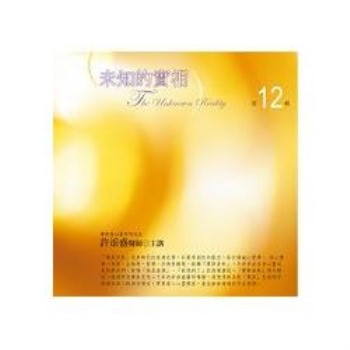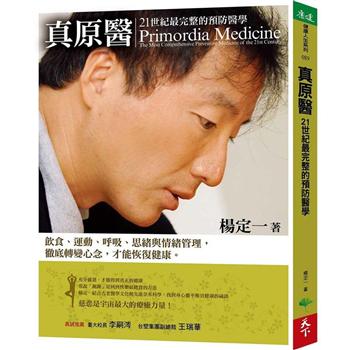圖書簡介In 1902, elegant Vienna is the city of the new century, the center of discoveries in everything from the writing of music to the workings of the human mind. But now a brutal homicide has stunned its citizens and appears to have bridged the gap between science and the supernatural. Two very different sleuths from opposite ends of the spectrum will need to combine their talents to solve the boggling crime: Detective Oskar Rheinhardt, who is on the cutting edge of modern police work, and his friend Dr. Max Liebermann, a follower of Sigmund Freud and a pioneer on new frontiers of psychology. As a team they must use both hard evidence and intuitive analysis to solve a medium’s mysterious murder–one that couldn’t have been committed by anyone alive.
__________________________________________________________
THE MORTALIS DOSSIER- PSYCHOLOGICAL THRILLERS: THE CURIOUS CASE OF PROFESSOR SIGMUND F. AND DETECTIVE FICTION
Summertime–the Austrian Alps: A middle-aged doctor, wishing
to forget medicine, turns off the beaten track and begins a strenuous
climb. When he reaches the summit, he sits and contemplates the distant
prospect. Suddenly he hears a voice.
“Are you a doctor?”
He is not alone. At first, he can’t believe that he’s being addressed.
He turns and sees a sulky-looking eighteen-year-old. He recognizes
her (she served him his meal the previous evening). “Yes,” he replies.
“I’m a doctor. How did you know that?”
She tells him that her nerves are bad, that she needs help.
S ometimes she feels like she can’t breathe, and there’s a hammering in
her head. And sometimes something very disturbing happens. She sees
things–including a face that fills her with horror. . . .
Well, do you want to know what happens next? I’d be surprised if
you didn’t.
We have here all the ingredients of an engaging thriller: an isolated
setting, a strange meeting, and a disconcerting confession.
So where does this particular opening scene come from? A littleknown
work by one of the queens of crime fiction? A lost reel of an
early Hitchcock film, perhaps? Neither. It is in fact a faithful summary
of the first few pages of Katharina by Sigmund Freud, also known as
case study number four in his Studies on Hysteria, co-authored with Josef
Breuer and published in 1895.
It is generally agreed that the detective thriller is a nineteenthcentury
invention, perfected by the holy trinity of Collins, Poe, and
(most importantly) Conan Doyle; however, the genre would have
been quite different had it not been for the oblique influence of psychoanalysis.
The psychological thriller often pays close attention to
personal history–childhood experiences, relationships, and significant
life events–in fact, the very same things that any self-respecting
therapist would want to know about. These days it’s almost impossible
to think of the term “thriller” without mentally inserting the prefix
“psychological.”
So how did this happen? How did Freud’s work come to influence
the development of an entire literary genre? The answer is quite simple.
He had some help–and that help came from the American film
industry.
Now it has to be said that Freud didn’t like America. After visiting
America, he wrote: “I am very glad I am away from it, and even more
that I don’t have to live there.” He believed that American food had
given him a gastrointestinal illness, and that his short stay in America
had caused his handwriting to deteriorate. His anti-American sentiments
finally culminated with his famous remark that he considered
America to be “a gigantic mistake.”
Be that as it may, although Freud didn’t like America, America
liked Freud. In fact, America loved him. And nowhere in America was
Freud more loved than in Hollywood.
The special relationship between the film industry and psychoanalysis
began in the 1930s, when many emigre analysts–fleeing
from the Nazis–settled on the West Coast. Entering analysis became
very fashionable among the studio elite, and Hollywood soon
acquired the sobriquet “couch canyon.” Dr. Ralph Greenson, for
example–a well-known Hollywood analyst–had a patient list that
included the likes of Marilyn Monroe, Frank Sinatra, Tony Curtis,
and Vivien Leigh. And among the many Hollywood directors who
succumbed to Freud’s influence was Alfred Hitchcock, whose thrillers
were much more psychological than any that had been filmed before.
In one of his films Freud actually makes an appearance–well, more or
less. I am thinking here of Spellbound, released in 1945, and based on
Francis Beedings’s crime novel The House of Dr. Edwardes.
T he producer of Spellbound, David O. Selznick, was himself in
psychoanalysis–as were most of his family–and so enthusiastic was
he about Freud’s ideas that he recruited his own analyst to help him
vet the script. Hitchcock’s film has everything we expect from a psychological
thriller: a clinical setting, a murder, a man who has lost his
memory, a dream sequence, and a sinewy plot that twists and turns
toward a dramatic climax. That this film owes a large debt to psychoanalysis
is made absolutely clear when a character appears who is–in
all but name–Sigmund Freud: a wise old doctor with a beard, glasses,
and a fantastically hammy Viennese accent.
Since Hitchcock’s time, authors and screenwriters have had much
fun playing with the resonances that exist between psychoanalysis and
detection. This kind of writing reached its apotheosis in 1975 with the
publication of Nicholas Meyer’s The Seven-Per-Cent Solution, a novel in
which Freud and Sherlock Holmes are brought together to solve the
same case.
The relationship between psychoanalysis and detection was not
lost on Freud. In his Introductory Lectures, for example, there is a passage
in which he stresses how both the detective and the psychoanalyst depend
on accumulating piecemeal evidence that usually arrives in the
form of small and apparently inconsequential clues.
If you were a detective engaged in tracing a murder, would you expect to find that the murderer had left his photograph behind at the place of the crime, with his address attached? Or would you not necessarily have to be satisfied with comparatively slight and obscure traces of the person you were in search of? So do not let us underestimate small indications; by their help we may succeed in getting on the track of something
bigger.
Later in the same series of lectures, Freud blurs the boundary between
psychoanalysis and detection even further. He goes beyond pointing
out that psychoanalysis and detection are similar enterprises and suggests
that psychoanalytic techniques might actually be used to aid detection.
Freud describes the case of a real murderer who acquired highly
dangerous pathogenic organisms from scientific institutes by pretending
to be a bacteriologist. The murderer then used these stolen cultures
to fatally infect his victims. On one occasion, he audaciously wrote a
letter to the director of one of these scientific institutes, complaining
that the cultures he had been given were ineffective. But the letter
contained a Freudian slip–an unconsciously performed blunder.
Instead of writing in my experiments on mice or guinea pigs, the murderer
wrote in my experiments on men. Freud notes that the institute director–
not being conversant with psychoanalysis–was happy to overlook
such a telling error.
In a little-known paper called Psychoanalysis and the Ascertaining of
Truth in Courts of Law, Freud is even more confident that psychoanalytic
techniques might be used in the service of detection. He writes:
In both [psychoanalysis and law] we are concerned with a
secret, with something hidden. . . . In the case of the criminal it
is a secret which he knows he hides from you, but in the case of
the hysteric it is a secret hidden from himself. . . . The task of
the therapeutist is, however, the same as the task of the judge;
he must discover the hidden psychic material. To do this we
have invented various methods of detection, some of which
lawyers are now going to imitate.
It is interesting that criminology and forensic science emerged at exactly
the same time as psychoanalysis. In 1893, Professor Hans Gross
(also Viennese) published the first handbook of criminal investigation,
a manual for detectives. It was the same year that Freud published
(with Josef Breuer) his first work on psychoanalysis: a “Preliminary
Communication,” On the Psychical Mechanism of Hysterical Phenomena.
Freud, largely via Hollywood, wielded an extraordinary influence
on detective fiction. But to what extent is the reverse true?
We know that Freud was very widely read–and that he had
and Vivien Leigh. And among the many Hollywood directors who
succumbed to Freud’s influence was Alfred Hitchcock, whose thrillers
were much more psychological than any that had been filmed before.
In one of his films Freud actually makes an appearance–well, more or
less. I am thinking here of Spellbound, released in 1945, and based on
Francis Beedings’s crime novel The House of Dr. Edwardes.
The producer of Spellbound, David O. Selznick, was himself in
psychoanalysis–as were most of his family–and so enthusiastic was
he about Freud’s ideas that he recruited his own analyst to help him
vet the script. Hitchcock’s film has everything we expect from a psychological
thriller: a clinical setting, a murder, a man who has lost his
memory, a dream sequence, and a sinewy plot that twists and turns
toward a dramatic climax. That this film owes a large debt to psychoanalysis
is made absolutely clear when a character appears who is–in
all but name–Sigmund Freud: a wise old doctor with a beard, glasses,
and a fantastically hammy Viennese accent.
Since Hitchcock’s time, authors and screenwriters have had much
fun playing with the resonances that exist between psychoanalysis and
detection. This kind of writing reached its apotheosis in 1975 with the
publication of Nicholas Meyer’s The Seven-Per-Cent Solution, a novel in
which Freud and Sherlock Holmes are brought together to solve the
same case.
The relationship between psychoanalysis and detection was not
lost on Freud. In his Introductory Lectures, for example, there is a passage
in which he stresses how both the detective and the psychoanalyst depend
on accumulating piecemeal evidence that usually arrives in the
form of small and apparently inconsequential clues.
If you were a detective engaged in tracing a murder, would
you expect to find that the murderer had left his photograph
behind at the place of the crime, with his address attached? Or
would you not necessarily have to be satisfied with comparatively
slight and obscure traces of the person you were in
search of? So do not let us underestimate small indications; by
their help we may succeed in getting on the track of something
bigger.
Later in the same series of lectures, Freud blurs the boundary between
psychoanalysis and detection even further. He goes beyond pointing
out that psychoanalysis and detection are similar enterprises and suggests
that psychoanalytic techniques might actually be used to aid detection.
Freud describes the case of a real murderer who acquired highly
dangerous pathogenic organisms from scientific institutes by pretending
to be a bacteriologist. The murderer then used these stolen cultures
to fatally infect his victims. On one occasion, he audaciously wrote a
letter to the director of one of these scientific institutes, complaining
that the cultures he had been given were ineffective. But the letter
contained a Freudian slip–an unconsciously performed blunder.
Instead of writing in my experiments on mice or guinea pigs, the murderer
wrote in my experiments on men. Freud notes that the institute director–
not being conversant with psychoanalysis– was happy to overlook
such a telling error.
In a little-known paper called Psychoanalysis and the Ascertaining of
Truth in Courts of Law, Freud is even more confident that psychoanalytic
techniques might be used in the service of detection. He writes:
In both [psychoanalysis and law] we are concerned with a
secret, with something hidden. . . . In the case of the criminal it
is a secret which he knows he hides from you, but in the case of
the hysteric it is a secret hidden from himself. . . . The task of
the therapeutist is, however, the same as the task of the judge;
he must discover the hidden psychic material. To do this we
have invented various methods of detection, some of which
lawyers are now going to imitate.
It is interesting that criminology and forensic science emerged at exactly
the same time as psychoanalysis. In 1893, Professor Hans Gross
(also Viennese) published the first handbook of criminal investigation,
a manual for detectives. It was the same year that Freud published
(with Josef Breuer) his first work on psychoanalysis: a “Preliminary
Communication,” On the Psychical Mechanism of Hysterical Phenomena.
Freud, largely via Hollywood, wielded an extraordinary influence
on detective fiction. But to what extent is the reverse true?
We know that Freud was very widely read–and that he had
lished a memoir in 1971, which contains a very interesting aside. The
two men had been discussing literature, and Freud had expressed his
admiration for several writers, most of them acknowledged masters
and writers of the first magnitude, such as Dostoevsky. However, by
the Wolfman’s reckoning at least, a lesser talent seemed to have gatecrashed
Freud’s literary pantheon.
Once we happened to speak of Conan Doyle and his creation,
Sherlock Holmes. I had thought that Freud would have
no use for this type of light reading matter, and was surprised to
find that this was not at all the case and that Freud had read
this author attentively. The fact that circumstantial evidence
is useful in psychoanalysis when reconstructing a childhood
history may explain Freud’s interest in this type of literature.
The Wolfman’s final observation is clearly correct. Crimes are like
symptoms, and the psychoanalyst and detective are similar creatures.
Both scrutinize circumstantial evidence, both reconstruct histories,
and both seek to establish an ultimate cause.
If we broaden our definition of what might legitimately be called
detective fiction and permit ourselves to consider works written even
before Hoffmann’ s Mademoiselle de Scudery, then we encounter a story
that, without doubt, exerted a profound influence on Freud and the
development of psychoanalysis. It is a story that British writer Christopher
Booker has called the greatest “whodunit” in all literature. It is
one of the earliest stories of murder and detection ever recorded and
has a twist in the tale that still has the power to shock: Oedipus Rex by
Sophocles.
When we meet Oedipus, there is a curse on his country. He is told
that this curse will not be lifted until he has discovered the identity of
the man who murdered his predecessor: King Laius, the former husband of Oedipus’s new wife, Jocasta. Oedipus follows clue after clue until his investigation leads him inexorably to a terrible conclusion.
It was he, Oedipus, who killed the king. Laius was his father and
Oedipus is now married to his own mother.
This classic tragedy is also an ancient detective story and gave its
name to the cornerstone of psychoanalytic theory–the much mooted
(and even more misunderstood) Oedipus complex–a group of largely
unconscious ideas and feelings concerning wishes to possess the parent
of the opposite sex and eliminate the parent of the same sex.
I think there is something very satisfying about the relationship
between psychoanalysis and detective fiction. Freud influenced the
course of detective fiction, but by the same token, detective fiction (in
its broadest possible sense) also influenced Freud. And at a deeper
level, psychoanalysis–a process that resembles detective work–
discovers a “whodunit” buried in the depths of every human psyche.












